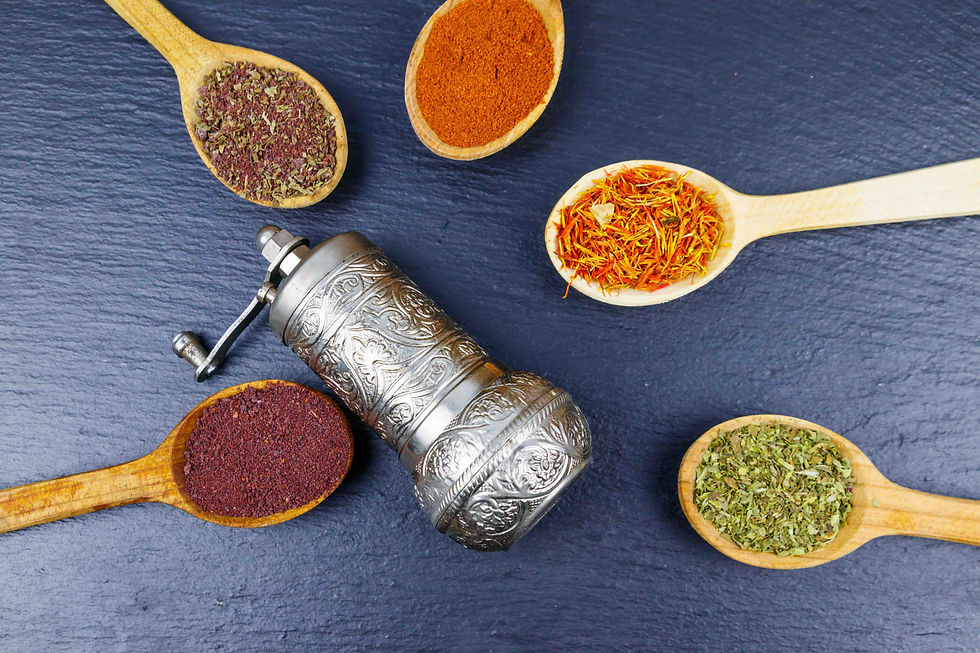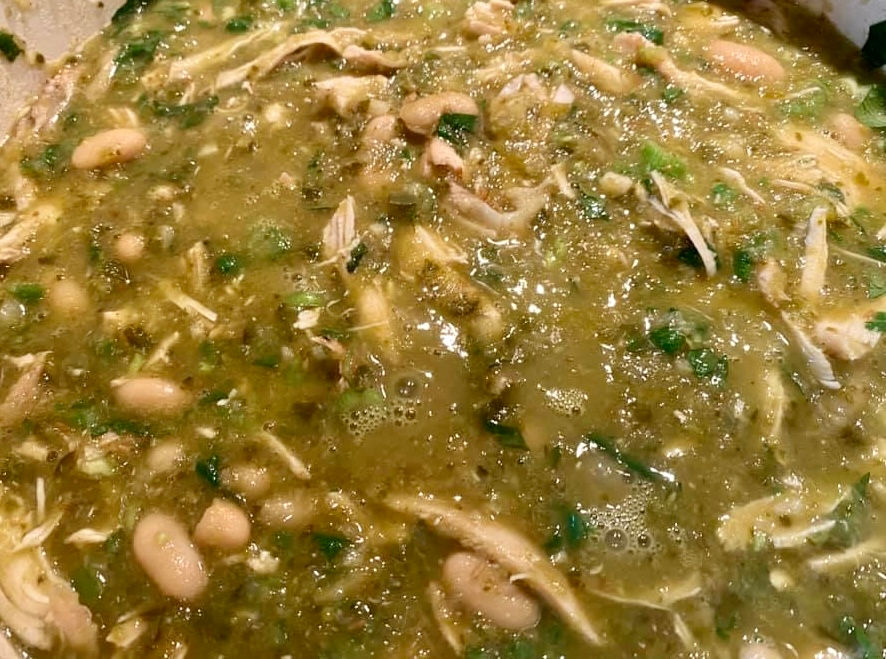- Schatzi

- Mar 25, 2023
- 6 min read
Updated: Jan 16
Slow-cooking lamb with vegetables, fruits, and spices

Imagine being transported to the stunning landscapes of Morocco, where you can smell the aromatic spices and hear the sizzling of succulent lamb. That's exactly what you'll get with every bite of the delectable Lamb Tagine. This North African dish has a rich history that dates back to ancient times when the Moroccan locals used earthenware pots to cook their meals slowly over hot coals. The origins of this dish are rooted in Berber cuisine. The name "Tagine" refers to both the dish and the dishware, which comes in various shapes and sizes.
It's a comforting stew-like dish that warms you up from the inside out, thanks to the blend of exotic spices, juicy lamb, and the tender burst of apricots and dates. Every ingredient plays a crucial role in the unique flavor profile of this dish, from the delectable blend of spices like cinnamon, cumin, and turmeric, to the succulent lamb that is typically sourced from the Atlas Mountains. All in all, it's a perfect meal for anyone looking to explore new cuisines from around the world!
Just returning from an extended trip to Morocco, I still can smell the complex aromas and taste the succulent meat surrounded by an emulsion of luscious sauces. Almost every lamb tagine I tasted was slightly different. Variance in the ingredients, but particularly the use of different spice mixtures, made it a new experience every time. Combining secret herbs, seeds, peppers, and other aromas can turn this dish into a family's culture. The secret?
Ras El Hanout! This spice mixture consists of many ingredients, and every family has their own recipe. I tried to crack some of the "code" and developed a great mix for a Lamb Tagine. Click on the link and recreate this mystic mix.
However, there is one thing that is not a traditional part of a Tagine: Couscous. Cruising recipes on the Internet, you will find almost every Tagine recipe with Couscous as a side dish or even in the Tagine.
It's a myth that Tagines are served with Couscous!

And this is what I learned in Marocco - you eat a Tagine with bread (Khobz)! As a matter of fact, the bread is used to scoop the Tagine and eat it in lieu of using utensils. It takes a little bit of practice. If this is not your thing, just use a fork. There is nothing wrong with this.
What kind of meat cut?
This is certainly a matter of taste. With a slow cooking method, almost everything goes. I found most recipes using boneless meat. I guess the purpose here is to offer your guests an easier way to eat. Sure, a cubed shoulder will work as well, but there is something you are missing. Particularly a slow-cooked dish benefits from the additional flavors a bone will provide. Think about the difference between stock and broth. Most Lamb Tagines I had in Morocco used bone cuts such as bone-in stew meat or neck. I know that it can be challenging to cook with bone-in meat. Therefore I considered both versions in this recipe. It will require a slightly different handling and cooking time.
Do you need a Tagine pot to make a Tagine?

No! It certainly looks authentic when you cook and present this dish in its original cookware. Using another pot, however, will not alter the taste. The best alternative I could recommend is a dutch oven or a slow cooker.
Moroccan Lamb Tagine
Ingredients
2 1/2 pounds of lamb cutlets or neck, including the bones (preferred) or 2 pounds boneless, skinless lamb shoulder, cut into 1 1/2-inch cubes (note 1)
2 tbsp Blanched Almond Slivers
2 tbsp Ghee (note 2)
2 tbsp Ras el Hanout spice mix
1 tsp Salt
1/2 tsp Black Pepper
1 Yellow Onion, finely chopped
2 cloves of Garlic, pasted
2 Carrots, quartered lengthwise and then cut into approx. 4-5 inch long pieces
2 Celery Stalks, halved lengthwise and then cut into approx. 4-5 inch long pieces
1 (14.5 ounces) can of Diced Tomatoes, undrained
1 (14.5 ounces) can of Chickpeas, rinsed and drained
7 Dried Apricots
7 Dates, seeded
1 Orange
1/4 cup chopped fresh cilantro
Water as needed
For serving:
Traditional Moroccan Khobz (bread) (note 4)
The Process
Cut the lamb into smaller pieces. (note 1) Salt and pepper the meat.
With a peeler, cut 3-4 large slices of peel from the orange. Do not use the pith (white inner part) since this will add bitter flavors to the dish.
Add ghee to the tagine or a dutch oven over medium-high heat.
Add the lamb pieces to the pot and fry until browned, approx. 5 minutes. Do not overcook the meat. (note 3)
Remove the meat from the pot and set aside.
Add almonds and onions to the pot and cook until onions are translucent, approx. 5 minutes.
Add garlic and Ras El Hanout to the pot and cook for approx. 1 minute.
Put the meat back into the pot, and add diced tomatoes, orange peel, and enough water to cover the meat. Bring to a boil.
Close the lid and reduce the cooking heat to low.
If using bone-in meat, cook for 1 1/2 hours.
If using boneless lamb cubes, cook for 40-60 minutes. Make sure the meat is soft.
Add apricots, dates, carrots, celery, and chickpeas to the pot and cook for another 40 minutes.
Remove the lid from the pot. The sauce should not be runny. If the tagine is still too liquidy, increase the heat to medium-high and reduce the liquid until it has a consistency like syrup.
Sprinkle some chopped cilantro over the tagine and serve in the tagine pot. If you cooked the tagine in a dutch oven, fill it entirely into a serving dish. Traditionally, you scoop the tagine with bread right out of the pot. If this is not your thing, you can use soup bowls for everybody instead.
Notes:
If you use boneless lamb shoulder, make sure to cut the meat into pieces that are not too small. Cubes below 1 1/2 inches will become dry. Using bone-in meat is different. Leave the pieces larger. A lamb neck will be cut into slices approx. 1 1/2 inches thick. The bone-in pieces require a longer cooking time because the meat must be falling off the bones when done.
If you do not have ghee available, you can substitute it with 1 tbsp of oil and 1 tbsp of butter.
Many tagine recipes do not call for frying the meat. However, I think it is critical. Through searing meats, you will trigger the Maillard reaction, which is a chemical reaction between amino acids and reducing sugars and gives browned food its distinctive flavor.
Khobz (خبز) translates into "bread". So, it is not too special. It is made from white flour, water, yeast, and salt. Khobz is flat. It seems to be interchangeable with Pita bread. However, there is a slight difference. Pita bread is made as a pocket, while Khobz is solid and a little bit thicker. So, you can substitute, but it is not exactly the same.
Wine Pairing
Valpolicella Ripasso such as Armani Valpolicella Ripasso, 2019
Why:
Valpolicella offers dried fruit flavors, sometimes smoke and clove aromas—a perfect match for a lamb stew with dried fruits. The best pick would probably be a Valpolicella Amarone. However, these can be easily in the $50-$60 range or higher. The Ripasso is in a $20-$30 price range, a lower-cost alternative that comes very close in quality. Sometimes referred to as “Baby Amarone” it will not disappoint. Yes, I picked an Italian over a Moroccan wine. Morocco has excellent wines, and a Moroccan Syrah would be a good match. I prefer the Valpolicella, and it has better availability in the U.S.
Music Pairing
Oudaden (in Berber: ⵓⴷⴰⴷⴻⵏ), various songs from the Album Zayd Zayd
Why:
This Moroccan musical group plays Berber Amazigh music. Traveling through Morocco, you will find that the country is influenced not only by the Arabic culture but to a great extend also by the Berbers who populated Morocco thousands of years before Arabs even settled there. Tagine is a product of the Berber culture. Inspired by traditional Amazigh music, Oudaden transforms it into a newer style. It demonstrates the timelessness of this music, matching the timelessness of a tagine dish.








